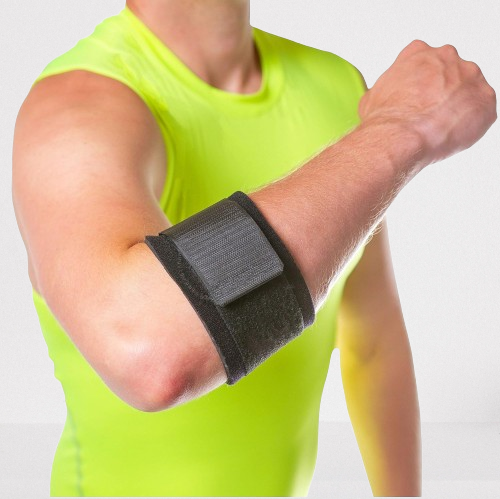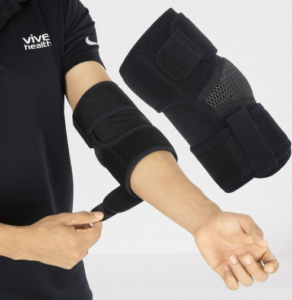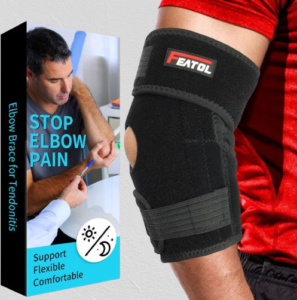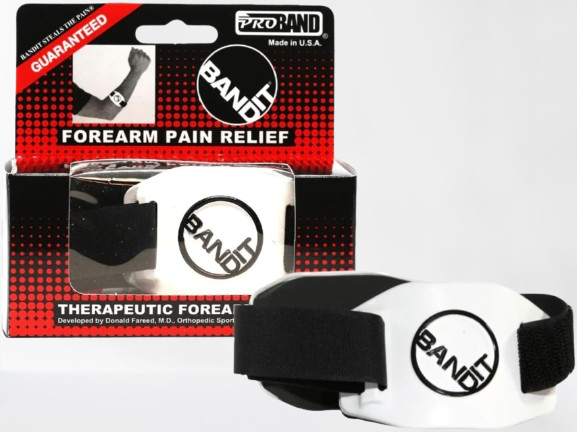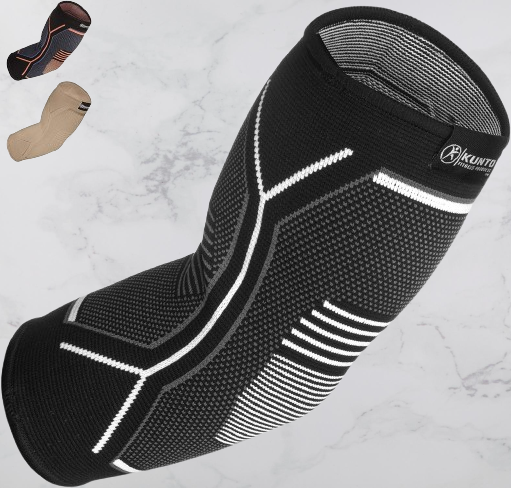Benefits of Using Tennis Elbow Brace
Using a tennis elbow brace offers several benefits, particularly for those suffering from tennis elbow (lateral epicondylitis), which is a condition caused by repetitive strain on the tendons in the forearm. Here are some key benefits of using a tennis elbow brace:
1. Pain Relief:
A tennis elbow brace applies pressure to the forearm muscles, relieving stress on the affected tendons. This helps reduce pain, especially during activities that involve gripping or lifting.
2. Support and Stabilization:
The brace provides support to the muscles and tendons around the elbow, reducing movement in the injured area and preventing further strain.
3. Prevents Further Injury:
By offloading stress from the elbow, the brace helps protect the area from additional damage during activities that could aggravate the injury.
4. Improves Healing:
It aids in promoting proper healing by reducing repetitive strain on the elbow tendons, allowing inflammation to subside.
5. Non-Invasive Treatment:
Wearing a brace is a non-invasive, low-cost way to manage symptoms compared to treatments like injections or surgery.
6. Increases Activity Tolerance:
A brace allows individuals to continue some activities that would otherwise cause discomfort, making it easier to maintain an active lifestyle while recovering.
7. Customizable Fit:
Many braces are adjustable, allowing for a snug fit that provides the right amount of pressure and comfort for each individual.
8. Helps With Other Conditions:
In addition to tennis elbow, braces can also help with other similar conditions such as golfer’s elbow, tendinitis, and general forearm strain.
A tennis elbow brace is most effective when combined with rest, physical therapy, and proper ergonomics.
Importance of Using Tennis Elbow Brace
The importance of using a tennis elbow brace, especially for those suffering from tennis elbow (lateral epicondylitis), lies in its ability to promote healing, provide support, and prevent further injury. Here’s why using a brace is crucial:
1. Reduces Pain and Discomfort:
The brace helps alleviate pain by distributing pressure away from the damaged tendons. This is especially important for individuals who need pain relief to continue daily activities without aggravating the injury.
2. Prevents Further Damage:
Tennis elbow is often caused by repetitive motions, such as gripping or lifting. A brace limits the strain on the tendons and muscles, preventing additional micro-tears that could worsen the condition.
3. Promotes Faster Recovery:
By stabilizing the forearm muscles and reducing the load on the affected area, the brace allows the tendons to heal more effectively, which shortens recovery time.
4. Allows for Activity Continuation:
For athletes and those involved in activities that require hand and arm movements, a tennis elbow brace enables them to continue their routines with reduced risk of exacerbating the injury. This is particularly important for professionals or enthusiasts who cannot afford long breaks.
5. Prevents Recurrence:
Even after recovery, wearing a brace during high-risk activities can help prevent the recurrence of tennis elbow by providing ongoing support and reducing strain on vulnerable areas.
6. Improves Functionality:
The brace enhances muscle functionality by allowing for controlled and pain-free movement, increasing the likelihood of engaging in therapeutic exercises essential for full recovery.
7. Non-Invasive Support:
A brace provides an affordable, non-invasive, and accessible way to manage and treat tennis elbow without resorting to more aggressive treatments like cortisone injections or surgery.
8. Enhances Comfort:
Many individuals with tennis elbow experience constant discomfort. Using a brace offers comfort throughout the day by lessening the strain on the arm during everyday tasks.
By supporting the injured tendons and muscles and preventing further damage, a tennis elbow brace plays a significant role in managing and treating the condition, ultimately promoting long-term recovery and comfort.
Types of Tennis Elbow Brace
There are several types of tennis elbow braces, each designed to provide different levels of support and pressure to help alleviate pain and aid in recovery. Here are the main types of tennis elbow braces:
1. Counterforce Elbow Brace:
Description: The most common type, it consists of a strap worn around the forearm just below the elbow.
Function: Applies pressure to the forearm muscles, reducing strain on the tendons attached to the lateral epicondyle (elbow). It helps relieve pain during gripping or lifting activities.
Best For: Mild to moderate cases of tennis elbow, general forearm strain, or for use during physical activity.
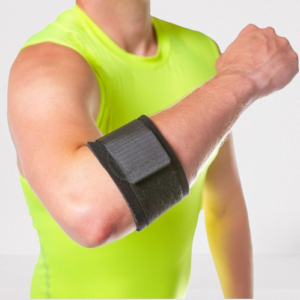
2. Tennis Elbow Sleeve:
Description: A full arm sleeve that covers the forearm, elbow, and sometimes part of the upper arm.
Function: Provides compression along the entire forearm and elbow, improving blood circulation and reducing inflammation.
Best For: Individuals seeking overall compression and support. It’s useful for those with swelling or inflammation in addition to tennis elbow pain.
3. Elbow Support Strap with Pad:
Description: Similar to the counterforce brace but includes a gel or foam pad that applies direct pressure to the affected tendon.
Function: The pad focuses the compression more directly on the irritated tendon to relieve pain.
Best For: Targeted pain relief and when precise pressure application is needed, such as during sports or specific activities that trigger pain.
4. Dual Support Brace:
Description: This brace combines a counterforce strap and a sleeve for dual support.
Function: It provides both compression and pressure to support the entire elbow joint and forearm muscles.
Best For: Severe cases of tennis elbow or people who need maximum support during sports or manual labor.
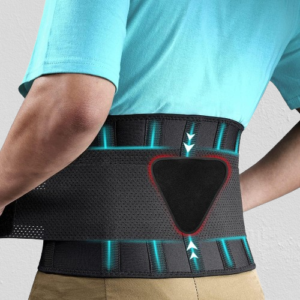
5. Adjustable Elbow Strap:
Description: A simple, adjustable strap with Velcro that allows the user to change the level of pressure.
Function: Offers customizable compression and support depending on activity level and pain.
Best For: People who need to adjust the pressure throughout the day, based on their level of discomfort or activity.
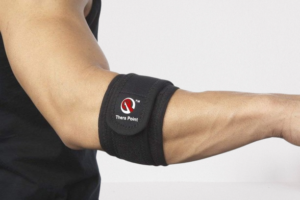
6. Magnetic Elbow Brace:
Description: A brace that includes magnets embedded in the material.
Function: Some believe that magnetic therapy helps increase blood flow and reduce inflammation, though scientific evidence is limited.
Best For: Individuals seeking alternative therapies to supplement traditional treatment methods.
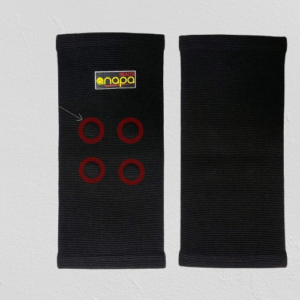
7. Cold/Heat Therapy Braces:
Description: Braces that incorporate gel packs for cold or heat therapy, typically removable or integrated into the sleeve.
Function: Cold therapy helps reduce inflammation, while heat therapy promotes circulation and muscle relaxation.
Best For: Use during acute phases of injury (cold) or chronic pain (heat) to aid in recovery.
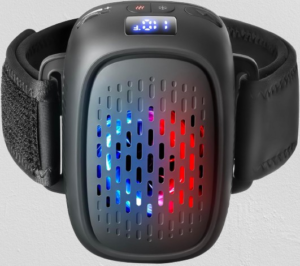
8. Neoprene Elbow Support Brace:
Description: Made from neoprene, which provides warmth and compression to the elbow and surrounding muscles.
Function: Warms the affected area, promotes blood circulation, and offers support and flexibility without restricting movement.
Best For: Athletes or active individuals who need both support and mobility during their activities.
Each type of tennis elbow brace serves a specific function depending on the severity of the condition and the needs of the individual. Selecting the right brace depends on factors like activity level, the severity of the injury, and personal comfort preferences.
There are several types of tennis elbow braces, each designed to provide different levels of support and pressure to help alleviate pain and aid in recovery. Here are the main types of tennis elbow braces:
1. Counterforce Elbow Brace:
Description: The most common type, it consists of a strap worn around the forearm just below the elbow.
Function: Applies pressure to the forearm muscles, reducing strain on the tendons attached to the lateral epicondyle (elbow). It helps relieve pain during gripping or lifting activities.
Best For: Mild to moderate cases of tennis elbow, general forearm strain, or for use during physical activity.

2. Tennis Elbow Sleeve:
Description: A full arm sleeve that covers the forearm, elbow, and sometimes part of the upper arm.
Function: Provides compression along the entire forearm and elbow, improving blood circulation and reducing inflammation.
Best For: Individuals seeking overall compression and support. It’s useful for those with swelling or inflammation in addition to tennis elbow pain.
3. Elbow Support Strap with Pad:
Description: Similar to the counterforce brace but includes a gel or foam pad that applies direct pressure to the affected tendon.
Function: The pad focuses the compression more directly on the irritated tendon to relieve pain.
Best For: Targeted pain relief and when precise pressure application is needed, such as during sports or specific activities that trigger pain.
4. Dual Support Brace:
Description: This brace combines a counterforce strap and a sleeve for dual support.
Function: It provides both compression and pressure to support the entire elbow joint and forearm muscles.
Best For: Severe cases of tennis elbow or people who need maximum support during sports or manual labor.
5. Adjustable Elbow Strap:
Description: A simple, adjustable strap with Velcro that allows the user to change the level of pressure.
Function: Offers customizable compression and support depending on activity level and pain.
Best For: People who need to adjust the pressure throughout the day, based on their level of discomfort or activity.
6. Magnetic Elbow Brace:
Description: A brace that includes magnets embedded in the material.
Function: Some believe that magnetic therapy helps increase blood flow and reduce inflammation, though scientific evidence is limited.
Best For: Individuals seeking alternative therapies to supplement traditional treatment methods.
7. Cold/Heat Therapy Braces:
Description: Braces that incorporate gel packs for cold or heat therapy, typically removable or integrated into the sleeve.
Function: Cold therapy helps reduce inflammation, while heat therapy promotes circulation and muscle relaxation.
Best For: Use during acute phases of injury (cold) or chronic pain (heat) to aid in recovery.
8. Neoprene Elbow Support Brace:
Description: Made from neoprene, which provides warmth and compression to the elbow and surrounding muscles.
Function: Warms the affected area, promotes blood circulation, and offers support and flexibility without restricting movement.
Best For: Athletes or active individuals who need both support and mobility during their activities.
Each type of tennis elbow brace serves a specific function depending on the severity of the condition and the needs of the individual. Selecting the right brace depends on factors like activity level, the severity of the injury, and personal comfort preferences.
How to Choose the Right Tennis Elbow Brace?
Choosing the right tennis elbow brace is crucial for effective pain management and recovery. The ideal brace depends on your specific needs, level of activity, and the severity of your condition. Here are key factors to consider when selecting the right tennis elbow brace:
1. Severity of Condition:
Mild Cases: For minor pain or early-stage tennis elbow, a counterforce strap or simple elbow sleeve might be sufficient to provide support during activities.
Moderate to Severe Cases: If the pain is more significant or chronic, consider a dual-support brace that combines compression with targeted pressure, or a brace with an adjustable strap to customize pressure levels.
2. Type of Activity:
Sports Activities: If you’re active in sports or other repetitive motion activities, a counterforce brace or support strap with a pad works well, as it can reduce strain without restricting movement.
Daily Activities/Work: For everyday use, especially in jobs that involve manual labor or computer work, a compression sleeve provides continuous support and helps prevent strain throughout the day.
Heavy Lifting or Strenuous Work: A dual-support brace may be necessary to protect your elbow from further injury during intense physical work or heavy lifting.
3. Comfort and Fit:
Adjustable Straps: Look for braces with Velcro straps that allow you to adjust the pressure to your comfort level. This is particularly helpful if your pain fluctuates throughout the day or during certain activities.
Material: Choose a brace made of breathable materials like neoprene or nylon to avoid discomfort from sweating or irritation during extended wear.
Padding: Some braces come with foam or gel pads for extra comfort and targeted compression. If you want a brace that provides specific pressure on the tendons, this feature may be important.
4. Size and Fit:
Measure the circumference of your forearm to ensure you get the correct size. A brace that’s too tight may cause discomfort or restrict blood flow, while one that’s too loose won’t offer the necessary support.
Many braces come in adjustable sizes, which are flexible and allow you to customize the fit according to your arm’s shape and size.
5. Level of Support:
Light Support: For mild discomfort, opt for a lightweight sleeve or a simple counterforce brace that won’t restrict movement but provides enough support to alleviate mild symptoms.
Moderate to Heavy Support: If you’re experiencing more intense pain or require extra protection, look for dual-support braces or braces with targeted compression pads that focus on relieving pressure from the affected tendons.
6. Compression vs. Targeted Pressure:
Compression Braces/Sleeves: These are ideal if you need overall support for the forearm and elbow, especially if you have swelling or inflammation.
Targeted Pressure Braces: Braces with a pad or pressure point are more suitable if you want to focus on relieving pain specifically at the tendon insertion point on the elbow.
7. Ease of Use:
Ease of Putting On and Taking Off: A brace should be easy to put on and take off, especially if you plan to wear it regularly throughout the day or during physical activities.
Adjustability: A brace that is easily adjustable can be tightened or loosened depending on the activity you’re engaged in, offering flexibility throughout your day.
8. Cold/Heat Therapy:
If you experience swelling or need post-activity relief, consider a brace that incorporates gel packs for cold or heat therapy. Cold therapy can help reduce inflammation, while heat therapy can promote muscle relaxation and improved blood flow.
9. Cost:
Braces vary widely in price depending on their features and brand. Basic counterforce braces are often less expensive, while more advanced dual-support or gel pad braces can be pricier. However, investing in the right brace that meets your needs is worth it for better comfort and faster recovery.
10. Consult a Healthcare Professional:
If you’re unsure about which brace to choose, consult with a physical therapist or doctor. They can provide recommendations based on the severity of your condition and the type of support you require.
Summary of Key Points:
For mild to moderate cases, a simple counterforce strap or compression sleeve is often sufficient.
For more severe cases or during sports activities, consider a dual-support brace with adjustable pressure.
Make sure the brace fits properly and is comfortable, especially if worn for extended periods.
Choose a brace that suits your lifestyle and activities, offering the right balance between support and mobility.
By considering these factors, you can find the right tennis elbow brace that suits your needs, providing both comfort and relief.
Features of the Tennis Elbow Brace
A tennis elbow brace typically includes several key features designed to provide targeted support, reduce pain, and aid in the recovery of conditions like tennis elbow (lateral epicondylitis). Here are the main features of a tennis elbow brace:
1. Counterforce Strap:
Purpose: This strap applies pressure to the forearm muscles, reducing tension on the tendons near the elbow joint. By redistributing the force, it helps relieve pain and prevents further injury.
Location: Worn around the forearm, just below the elbow.
2. Adjustable Compression:
Purpose: Many tennis elbow braces have an adjustable strap (usually with Velcro) that allows users to tighten or loosen the brace for personalized compression and support.
Benefit: Customizable fit ensures optimal pressure on the affected area without causing discomfort or restricting blood flow.
3. Targeted Pressure Pad:
Purpose: Some braces feature a foam or gel pad that exerts localized pressure on the specific tendon or muscle group affected by tennis elbow.
Benefit: Provides focused relief on the injured tendons, enhancing pain reduction while still allowing full arm mobility.
4. Breathable and Moisture-Wicking Material:
Purpose: Made from materials like neoprene, nylon, or mesh, the brace is designed to be lightweight, breathable, and moisture-wicking to ensure comfort during prolonged use.
Benefit: Prevents skin irritation and excessive sweating, making it suitable for all-day wear or during physical activity.
5. Non-Slip Design:
Purpose: Many braces feature a non-slip lining or material that ensures the brace stays in place during movement, preventing it from slipping or rolling.
Benefit: Keeps the brace secure and effective throughout daily activities or sports without needing constant adjustment.
6. Flexible Fabric:
Purpose: The brace is usually made from flexible materials that allow a full range of motion while providing support.
Benefit: Ensures that the user can maintain normal movement without feeling restricted, making it suitable for both everyday tasks and athletic performance.
7. Universal Fit or Size Options:
Purpose: Some braces come in universal, one-size-fits-all designs with adjustable straps, while others are available in specific sizes to ensure a more precise fit.
Benefit: Offers flexibility for different arm sizes and shapes, with the adjustable design catering to personalized support needs.
8. Durable Construction:
Purpose: Tennis elbow braces are built to withstand regular use, often made from durable materials that maintain their elasticity and strength over time.
Benefit: Ensures the brace remains effective even after frequent use, making it a reliable part of injury recovery.
9. Lightweight Design:
Purpose: Designed to be lightweight to prevent the brace from adding bulk or being uncomfortable, especially during sports or activities.
Benefit: Provides unobtrusive support that can be worn comfortably under clothing without restricting daily activities.
10. Cold/Heat Therapy Integration:
Purpose: Some braces come with removable gel packs for cold or heat therapy, which can be inserted into the brace for added therapeutic benefits.
Benefit: Cold therapy reduces inflammation and pain, while heat therapy promotes blood circulation and muscle relaxation, making it a multi-functional tool for recovery.
11. Ergonomic Shape:
Purpose: Designed to contour to the shape of the arm and elbow for a comfortable and natural fit.
Benefit: Enhances comfort and ensures even pressure distribution, preventing chafing or irritation during prolonged use.
12. Latex-Free Construction:
Purpose: Many tennis elbow braces are made without latex to prevent allergic reactions or skin irritation for sensitive users.
Benefit: Safer for individuals with latex allergies, making the brace suitable for a wide range of users.
13. Dual-Support Mechanism (in Some Models):
Purpose: Some advanced braces combine a counterforce strap with a compression sleeve, providing both localized pressure and overall arm support.
Benefit: Offers comprehensive support for individuals with more severe conditions or those who need a combination of features for maximum relief.
These features combine to make a tennis elbow brace an effective tool for managing pain, reducing strain on the tendons, and speeding up recovery from injuries like tennis elbow.
How to Wear and Use a Tennis Elbow Brace Properly?
Wearing and using a tennis elbow brace properly is essential for achieving pain relief, reducing strain, and promoting healing. Here’s a step-by-step guide on how to wear and use a tennis elbow brace effectively:
1. Choose the Right Brace:
Make sure you have the right type of brace for your needs, whether it’s a counterforce brace, a compression sleeve, or a dual-support brace.
Ensure the brace fits your arm correctly and isn’t too tight or too loose.
2. Locate the Correct Position:
Identify the Pain Area: Tennis elbow is typically caused by inflammation of the tendons connected to the lateral epicondyle (the bony bump on the outside of your elbow).
The brace should be worn on the forearm, about 1 to 3 inches (2-5 cm) below the elbow—not directly on the elbow joint itself. This is where it will apply pressure to the forearm muscles and reduce the strain on the affected tendons.
3. Apply the Brace Correctly:
Place the Pressure Pad (If Available): If your brace has a pressure pad, position it over the muscles of the forearm, slightly away from the elbow. The pad should sit directly over the tendons connected to the elbow to provide targeted relief.
Tighten the Strap: Adjust the strap so that it fits snugly around your arm without being too tight. You should feel firm pressure, but it should not cut off circulation or cause discomfort.
Check for Comfort: After securing the brace, ensure that you can still move your wrist, hand, and fingers freely. The brace should allow for full range of motion without slipping or shifting during activity.
4. Adjust Tightness as Needed:
Too Tight: If the brace feels uncomfortable or you notice discoloration or numbness in your arm or hand, loosen it immediately. An overly tight brace can restrict blood flow.
Too Loose: If the brace feels too loose or slides down your arm, tighten it to ensure it stays in place and provides adequate support.
5. Use During Activity:
Wear During Specific Activities: Wear the brace during activities that typically trigger your tennis elbow pain, such as playing sports (tennis, golf), typing, lifting, or other repetitive motions.
Preventative Use: You can also wear the brace during physical activities even if you’re not currently in pain to prevent a recurrence of tennis elbow.
Avoid Prolonged Use: While the brace can provide relief, it is not recommended to wear it continuously throughout the day unless necessary. Overuse of the brace can lead to muscle weakness.
6. Combine With Other Therapies:
Stretching and Strengthening Exercises: Use the brace alongside physical therapy exercises to strengthen the forearm muscles and improve flexibility. A brace helps relieve pain, but exercises are necessary for long-term recovery.
Rest and Ice Therapy: For acute pain or flare-ups, rest the affected arm and apply ice to reduce inflammation, using the brace during activity as needed.
7. Monitor Progress:
Evaluate Pain Levels: Regularly assess your pain levels to determine if the brace is helping. If pain persists or worsens, you may need to adjust how you’re using the brace or seek advice from a healthcare professional.
Gradual Reduction: As your symptoms improve, you may gradually reduce the frequency of wearing the brace. However, it’s a good idea to continue wearing it during high-risk activities, even after recovery, to prevent reinjury.
8. Care and Maintenance:
Keep It Clean: Wash the brace regularly to prevent sweat and dirt buildup, especially if you use it during sports. Follow the manufacturer’s instructions for cleaning.
Inspect for Wear and Tear:** If the straps or padding start to wear out or lose elasticity, replace the brace to ensure it continues providing adequate support.
9. When to Seek Professional Help:
If wearing the brace doesn’t improve your symptoms or if the pain becomes more severe, consult a doctor or physical therapist. They can help you evaluate your condition and determine whether adjustments to your brace or additional treatments are necessary.
Key Points:
Correct placement: Position the brace below the elbow (1-3 inches) on the forearm, not directly on the elbow joint.
Moderate pressure: Tighten the brace to a comfortable but supportive level—firm enough to relieve pain but not too tight to cut off circulation.
Activity-specific use: Wear the brace during activities that cause strain, such as sports or repetitive motions, and gradually reduce its use as your condition improves.
By following these steps, you can use your tennis elbow brace effectively to manage symptoms, enhance recovery, and prevent further injury.
How to Care for a Tennis Elbow Brace?
Proper care of your tennis elbow brace is essential to ensure its longevity and effectiveness. Here are some tips on how to care for your brace:
1. Regular Cleaning:
Follow Manufacturer’s Instructions: Always refer to the cleaning instructions provided by the manufacturer, as different materials and designs may have specific care requirements.
Hand Wash: Most tennis elbow braces can be hand-washed in cool water with mild soap. Gently scrub with a soft brush or cloth to remove dirt and sweat.
Avoid Machine Washing: If machine washing is recommended, use a gentle cycle and place the brace in a mesh laundry bag to protect it from damage.
Drying: Air dry the brace by laying it flat on a clean towel. Avoid using direct heat sources like a dryer or radiator, as high temperatures can damage the materials.
2. Proper Storage:
Keep It Dry: Store the brace in a dry place to prevent mold or mildew growth, which can occur if it remains damp for extended periods.
Avoid Excessive Heat: Keep the brace away from direct sunlight and sources of heat, as prolonged exposure can degrade the material.
Store Flat: If possible, store the brace flat or rolled loosely to prevent creases or deformation.
3. Inspection and Maintenance:
Check for Wear and Tear: Regularly inspect the brace for signs of wear, such as frayed straps, weakened Velcro, or damaged padding. Replace the brace if it shows significant signs of wear.
Adjust Straps and Fasteners: Ensure that Velcro straps and fasteners are in good working condition. If they start to lose their grip, clean them gently with a brush to remove lint and debris.
4. Preventing Odors:
Use Anti-Odor Products: If the brace develops an odor, you can use anti-odor sprays designed for sports equipment. Make sure the product is safe for use on the brace material.
Regular Cleaning: Regular cleaning can help prevent odors from developing. Allow the brace to dry completely between uses to minimize bacterial growth.
5. Repairing Minor Issues:
Sewing Small Tears: If the brace has small tears or seams starting to come apart, you might be able to repair them with needle and thread if you’re handy with sewing. For more significant damage, it’s better to replace the brace.
Reattaching Straps: If the Velcro or straps begin to detach, sew or replace them if possible. Make sure any repairs do not affect the brace’s functionality.
6. Avoiding Contaminants:
Keep Away from Chemicals: Avoid using harsh chemicals or detergents that could damage the brace’s material. Stick to mild soaps and water.
Keep Clean: Avoid wearing the brace directly on bare skin if possible to reduce the buildup of sweat and oils on the brace.
7. Replacing the Brace:
When to Replace: Replace the brace if it no longer provides adequate support, has significant wear and tear, or if the material becomes compromised. A worn-out brace may not offer the support you need and can be less effective in managing your condition.
Summary of Key Care Tips:
Hand wash with mild soap and air dry.
Store in a dry, cool place, flat or loosely rolled.
Inspect regularly for wear and tear and repair or replace as needed.
Prevent odors through regular cleaning and anti-odor products.
Proper care and maintenance will ensure that your tennis elbow brace remains effective and comfortable throughout its use.
What is the best Tennis Elbow Brace company?
There isn’t a single “best” tennis elbow brace company, as the right choice can vary based on individual needs and preferences. However, several reputable brands are well-regarded for their quality and effectiveness. Here are some top companies known for producing high-quality tennis elbow braces:
1. McDavid:
Overview: McDavid is known for its sports and orthopedic support products. Their tennis elbow braces often feature advanced materials and designs that provide targeted compression and support.
Popular Products: McDavid 491 Elbow Strap, McDavid 6560 Compression Elbow Sleeve.
2. Bauerfeind:
Overview: Bauerfeind is a German company renowned for its high-quality orthopedic products. Their braces are known for their ergonomic design and effective pain relief.
Popular Products: Bauerfeind EpiTrain Elbow Support, Bauerfeind EpiPoint Elbow Support.
3. Futuro:
Overview: Futuro, a brand by 3M, offers a range of braces and supports designed for comfort and effectiveness. Their products are widely available and provide good support at a reasonable price.
Popular Products: Futuro Comfort Stabilizing Elbow Brace, Futuro Performance Elbow Support.
4. Copper Fit:
Overview: Copper Fit is known for its use of copper-infused fabric in its braces, which is believed to provide additional benefits for pain relief and recovery.
Popular Products: Copper Fit Elite Elbow Sleeve.
5. Pro-Tec Athletics:
Overview: Pro-Tec Athletics offers a variety of braces and supports designed for athletes. Their products are known for their durability and effectiveness.
Popular Products: Pro-Tec Athletics Gel Arc Elbow Sleeve, Pro-Tec Athletics Tennis Elbow Support.
6. Shock Doctor:
Overview: Shock Doctor is well-regarded for its sports protection products. Their tennis elbow braces often feature advanced materials and designs for maximum support.
Popular Products: Shock Doctor Elbow Support, Shock Doctor Compression Sleeve.
7. Kunto Fitness:
Overview: Kunto Fitness provides affordable, high-quality compression sleeves and braces designed to support various types of injuries, including tennis elbow.
Popular Products: Kunto Fitness Elbow Brace.
8. Mueller:
Overview: Mueller offers a wide range of orthopedic supports and braces, known for their effectiveness and affordability.
Popular Products: Mueller Sports Medicine Adjustable Elbow Brace.
Factors to Consider When Choosing a Brand:
Comfort and Fit: Ensure the brace is comfortable and fits well, as poor fit can reduce its effectiveness.
Material and Design: Look for high-quality materials that provide adequate support and durability.
Customer Reviews: Read reviews and testimonials to gauge the effectiveness and reliability of the brace.
Price: Consider your budget, as prices can vary widely among brands and models.
Each of these companies offers quality products, so the best choice will depend on your specific needs, such as the severity of your condition, desired features, and budget.
